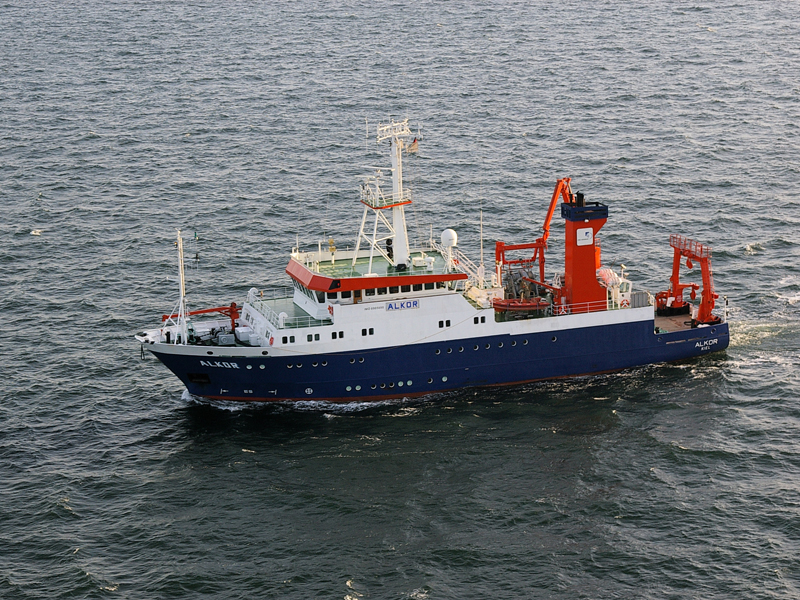ALKOR AL548
- Area:
- Baltic Sea
- Time:
-
03.11.2020 - 17.11.2020
- Institution:
- GEOMAR
- Chief scientist:
- Jens Greinert
WWII ammunition and munition has widely been deployed and dumped in the German Baltic Sea. Decaying munition shells are a threat to the environment because toxic substances as TNT, ADNT, Hg and Pb are released into the water and distributed into the sediments. The aim of this cruise is to repeat water sampling at stations conducted during the MineMoni cruise POS530 in 2018 in order to establish a regional and coastal scale monitoring (-> UDEMM Best Practices) along the German Baltic coast. Ex-situ near-realtime methods for the detection of explosive compounds shall be applied and tested via a new sampling system, which is developed within the project ExPloTect. Extending the high-resolution hydroacoustic and optical mapping of known dumpsites (Kolberger Heide and Lübeck Bight) aims at identifying the real extent of the munition contaminated area. Areas of increased risk (in terms of migration or burial of objects) will be re-mapped for local monitoring purposes including electromagnetic and sub-bottom information (not done in 2018). In addition, artificial intelligence methods applied to multi-sensor ship- and AUV-based datasets shall enhance the automated munition detection as part of the BASTA project; the integration of electromagnetic sensors on AUV-Anton will be tested.



